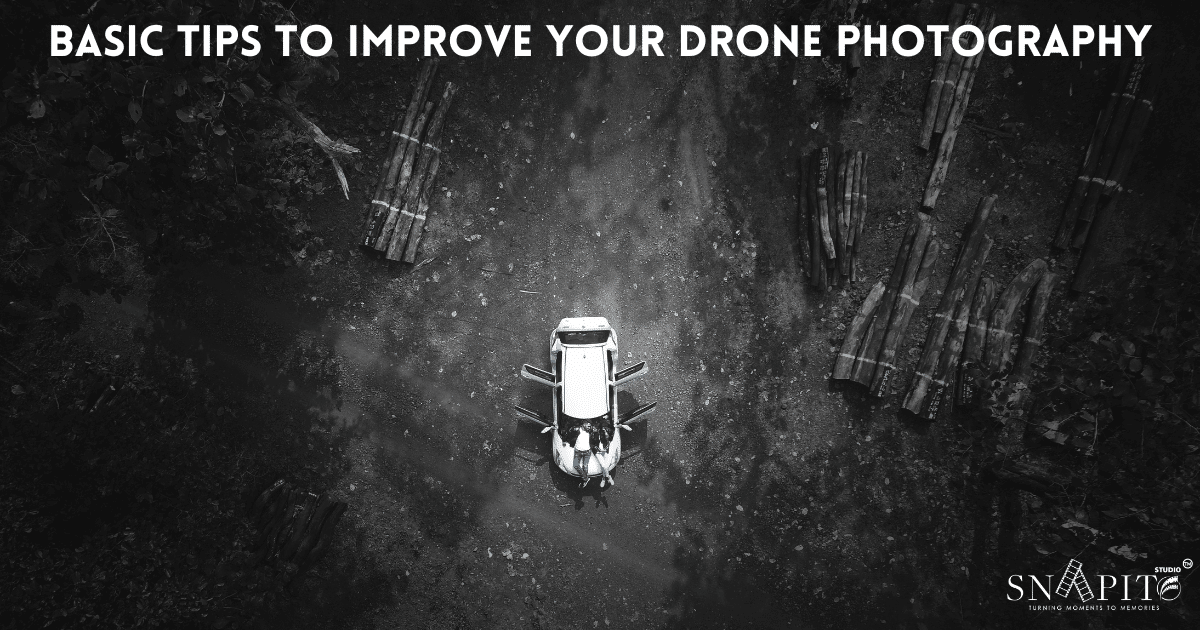It has always been possible to view the world differently through photography. The key to understanding this idea is undoubtedly aerial photography, which provides us with a perspective we would not otherwise have. It helps to examine well-known things and settings from new perspectives by providing a distinctive viewpoint on them.
Aerial photography is at the nexus of geography and art, used for anything from territorial mapping to creative efforts. What could appear typical from the ground generally appears shockingly unique from above, and the outcome is nearly always magnificent. Because of this, aerial photography has recently become one of the most sought-after genres of photography.
Photographers have an advantage thanks to drones since they can explore the artistic possibilities of novel vistas without having to hire a helicopter. Although drones have made aerial photography considerably more accessible, many artists still find it to be difficult and daunting. Learning how to fly and control a camera in the air is not difficult, and it may be a useful addition to a photographer’s skill set. You will be able to comprehend how to begin and be successful as a drone photographer with the straightforward advice we have provided for you. Let’s start now!
What is Aerial Photography?
Aerial photography broadly speaking refers to photos shot from the air. They may be photographed from a helicopter, an airplane, or a drone. It was initially employed for topographic mapping and military operations, and it continues to be a valuable data source for many branches of science. Aerial photography has developed into a superb photographic genre at the same time, giving artists fresh perspectives. The idea that aerial photography is only used for landscape photography is a popular one. But, you may capture the beauty of commonplace objects from a great height by taking bird’s-eye shots of architecture or a specific occasion, like a wedding or graduation.
Aerial photography was previously only possible from a helicopter or an airplane, making it prohibitively expensive for the typical photographer. Thankfully, the relative accessibility of drones has transformed photography and ushered in a new age for the art form.
Types Of Aerial Photography
Aerial photos typically fall into one of two groups.
A top-down shot, often known as a vertical photo, is taken as vertically as possible from a position immediately above the ground. This configuration means that the viewpoints available in this kind of aerial photography are constrained. Yet vertical photographs are frequently shot from higher elevations than oblique ones, allowing a photographer to capture a larger view.
While taking an oblique shot, the camera’s axis is tilted towards the surface, often at a 45-degree angle. Oblique images are perfect for capturing unusually shaped elements that can’t be correctly represented with a vertical image since they are typically shot from lower heights.
Top Aerial Photography Tips
1. Chose The Right Gear
A quick Google search for “drone” will reveal an incredible selection of drones. The two most common varieties of drones have cameras built-in or aboard, or you may attach your own camera. Because they are frequently larger and have lower-resolution sensors, drones with onboard cameras can reduce the quality of your photos. If you already know how to operate your camera and only need to learn how to fly a drone, smaller drones that let you connect your camera, like a GoPro, may be simpler to handle.
2. Explore Your Drone’s Potential
Although reading the instruction manual isn’t as exciting as flying your drone across the ocean or over mountains, you should do it if you want to become an expert at aerial photography. That book contains all the information you require on your drone. Several questions you might not even be aware you have will be addressed. You can spend more time honing your shots if you are aware of what your drone can and cannot achieve.
3. Don’t Forget Accessories
Like any other piece of equipment, drones offer a variety of add-ons that you may employ to enhance your flying abilities or the caliber of your photography. Some of them are:
- Further batteries
- A second set of propellers
- Engine Guards
- Further SD cards
4. Take A Test Drive
Each drone model is distinct and flies differently as a result. You may practice controlling your new drone safely and effectively by taking it to an open location free of obstacles like buildings, automobiles, and groups of people. Like any other photographic approach, drone operation takes considerable skill. Before mounting a camera, make sure you are familiar with drone operation. Next, do a test drive while also carrying your camera to feel the extra weight, and try snapping trial images while you’re moving.
5. Plan Your Flight
Planning your shot is one of the most difficult components of drone photography. Without being “up there,” how can you decide which scenes to record? To photograph amazing topics and settings with your drone, you must be at the appropriate spot. Check Google Maps or Google Earth for potential topics before shooting.
6. Think About The Composition
A good composition is beneficial to aerial photography, just like it is to any other type of photography. Finding the ideal perspective with a drone-mounted camera is more difficult but still possible. Drone photography follows the same basic compositional guidelines. Just keep in mind to use all the camera angles that your drone permits.
7. Be Careful
Understanding where and how to fly drones is essential. To prevent injury or property damage, maintain a safe distance from other people, buildings, automobiles, and other objects. Know the drone regulations in your nation and only use them where they are allowed to fly. Avoid flying over private property unless you have permission, and consider how your flight will impact other people’s experiences.

